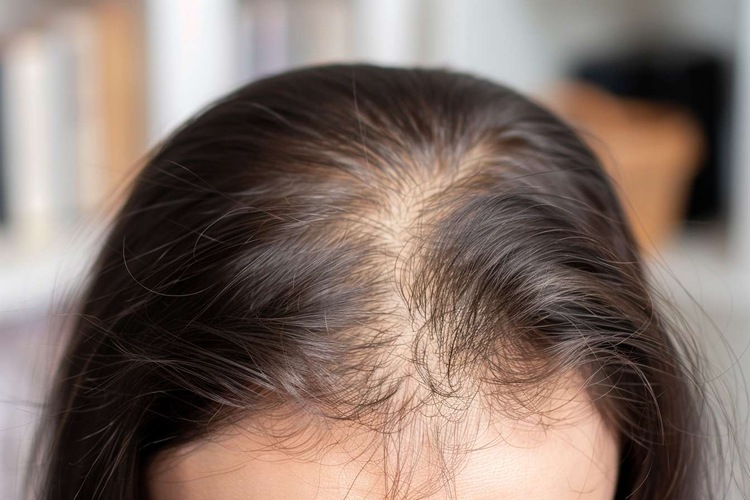Scalp Micropigmentation: A Modern Solution for Hair Loss
Scalp micropigmentation (SMP) has emerged as a groundbreaking cosmetic procedure for individuals grappling with hair loss. This innovative technique involves depositing pigment into the scalp's dermal layer, creating the illusion of a fuller head of hair or a closely shaved look. Unlike traditional hair restoration methods, SMP offers a non-surgical alternative that has gained popularity for its immediate results and minimal maintenance. The process, which typically requires multiple sessions, has been refined over the past decade to produce natural-looking outcomes that can significantly boost confidence in those affected by various forms of alopecia, scarring, or thinning hair.

The Science Behind the Procedure
At its core, scalp micropigmentation is a form of cosmetic tattooing. However, it differs significantly from traditional tattooing in several key aspects. The pigments used in SMP are specifically formulated to match various hair colors and skin tones, and they are deposited at a much shallower depth in the skin. This allows for more precise replication of hair follicles and ensures that the pigment retains its intended color over time, rather than shifting to blue or green hues as often seen with regular tattoos.
Techniques and Application Methods
Practitioners of scalp micropigmentation employ a variety of techniques to achieve a natural look. The most common approach is the pointillism method, where thousands of tiny dots are meticulously placed to mimic the appearance of hair follicles. For clients with existing hair, the pigment is often applied in a way that creates the illusion of density, blending seamlessly with the natural hair. In cases of complete baldness, technicians can create a hairline and overall head shape that complements the individual’s facial features and personal style preferences.
Customization and Artistry in SMP
One of the most compelling aspects of scalp micropigmentation is its high degree of customization. Skilled practitioners work closely with clients to design hairlines that suit their age, facial structure, and desired look. This level of personalization extends to the shade and density of the pigmentation, allowing for results that range from subtle enhancement to dramatic transformation. The artistry involved in creating a natural-looking SMP treatment requires not only technical skill but also an understanding of aesthetics and facial harmony.
Psychological Impact and Quality of Life
The psychological benefits of scalp micropigmentation cannot be overstated. Many individuals who undergo the procedure report significant improvements in self-esteem and confidence. For those who have struggled with hair loss for years, SMP can provide a sense of relief and renewed social comfort. Unlike wigs or hairpieces, which may shift or require constant adjustment, SMP offers a permanent solution that allows individuals to engage in activities without worry. This newfound freedom can have a profound impact on personal and professional relationships.
Longevity and Maintenance Considerations
While scalp micropigmentation is considered a permanent procedure, the results do require some maintenance over time. The pigment can fade gradually due to sun exposure and natural skin cell turnover. Most clients find that touch-up sessions every few years are sufficient to maintain the desired look. Additionally, proper aftercare in the weeks following the procedure is crucial for optimal results. This typically involves avoiding excessive sweating, prolonged sun exposure, and certain skincare products that may interfere with pigment retention.
Comparing SMP to Other Hair Loss Solutions
When considering scalp micropigmentation, many individuals compare it to other hair loss treatments such as hair transplants, topical medications, or hair systems. While each option has its merits, SMP stands out for its immediacy and low maintenance requirements. Unlike hair transplants, which can take months to show results and may require multiple surgeries, SMP provides instant gratification. It also avoids the ongoing costs and potential side effects associated with medications like finasteride or minoxidil.
Technological Advancements in SMP
Recent years have seen significant technological advancements in the field of scalp micropigmentation. Digital mapping tools now allow practitioners to plan and execute treatments with unprecedented precision. Additionally, improvements in pigment formulations have led to more stable, long-lasting results that resist color changes over time. Some clinics have even begun exploring the use of robotics to assist in the application process, potentially improving consistency and reducing treatment times.
Regulatory Landscape and Industry Standards
As scalp micropigmentation has grown in popularity, so too has the need for industry regulation and standardization. In many regions, SMP falls into a regulatory gray area between cosmetic tattooing and medical procedures. This has led to calls for more stringent training requirements and licensing for practitioners. Professional organizations have emerged to establish best practices and ethical guidelines, helping to ensure client safety and satisfaction. Prospective clients are increasingly encouraged to research practitioners’ credentials and portfolio work before committing to the procedure.




